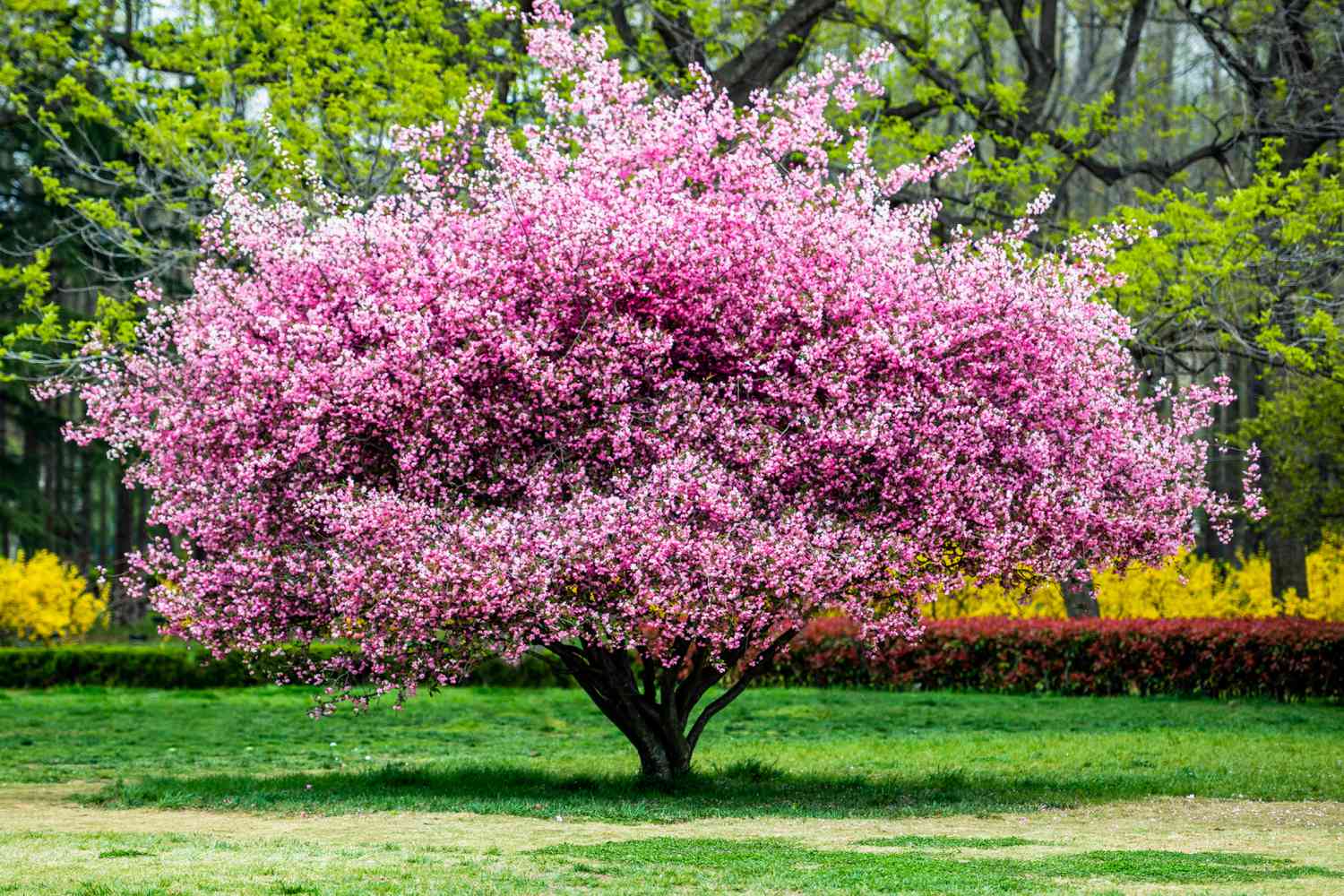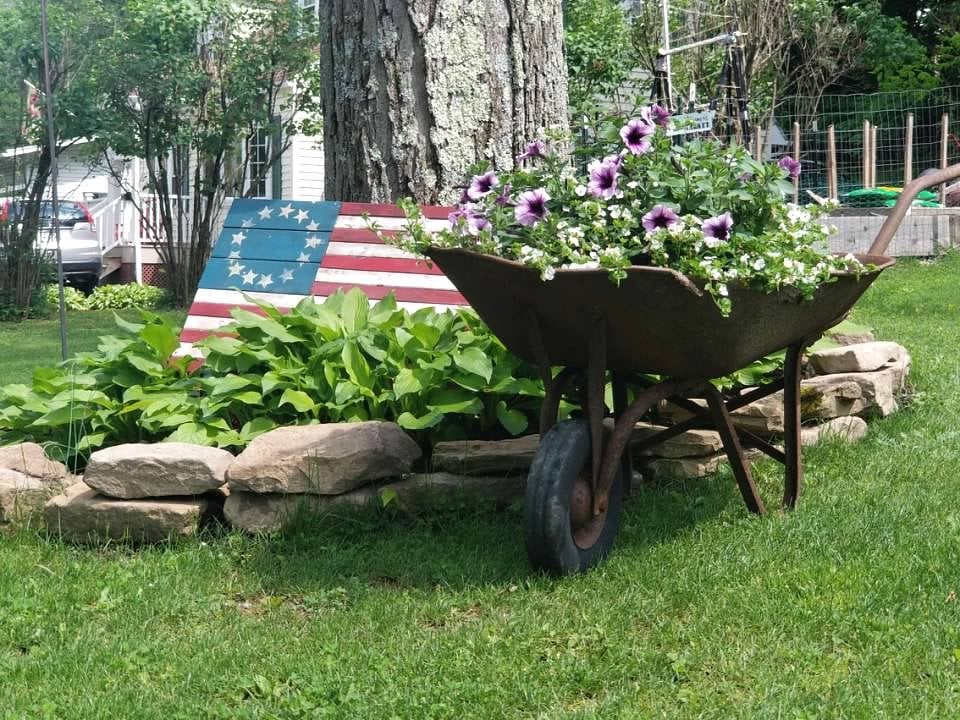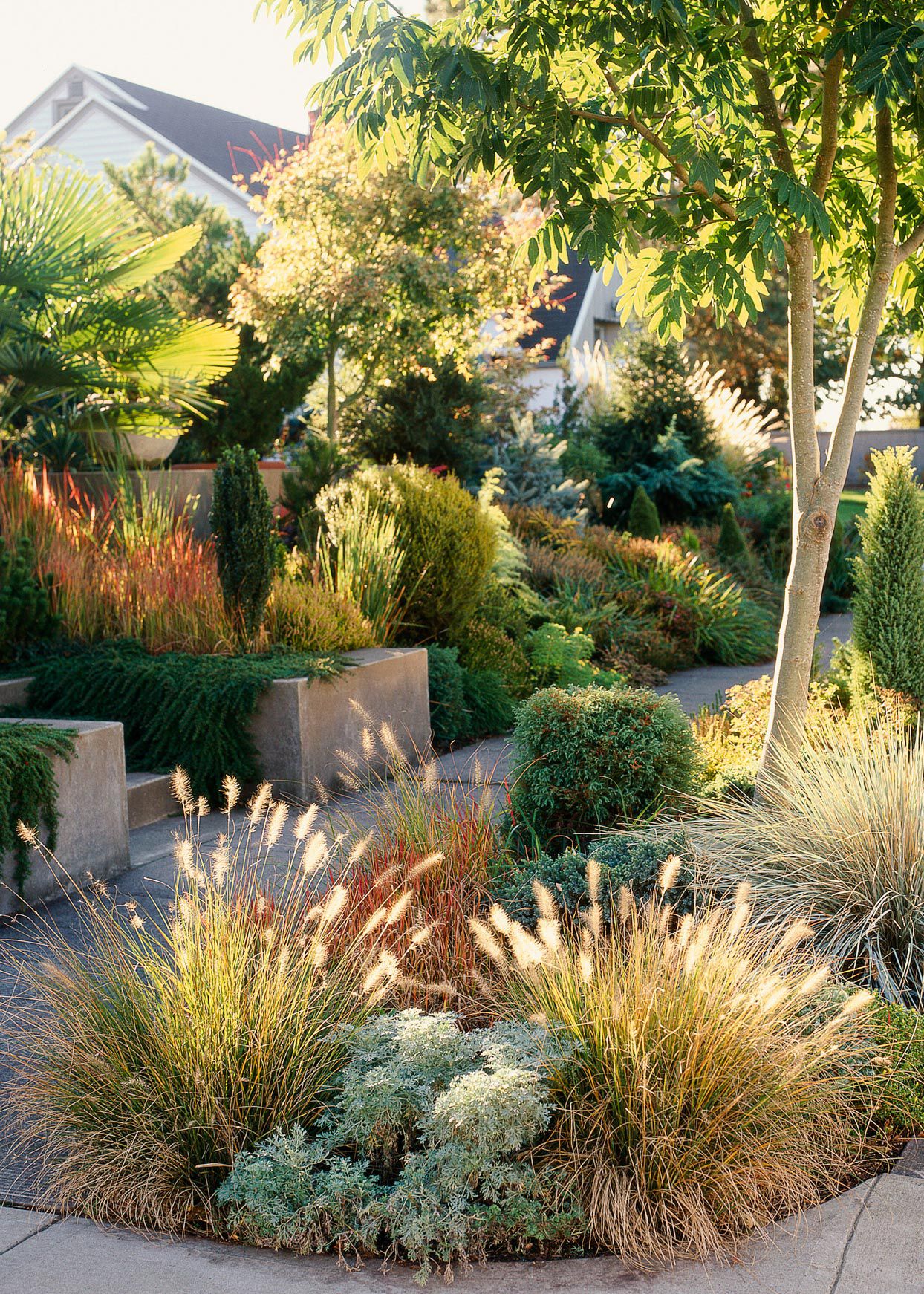Pink-flowered trees add vibrant beauty to any landscape. They captivate with their stunning hues and enchanting presence.
Pink-flowered trees are a delightful addition to gardens and parks, offering a visual feast with their vivid blossoms. These trees not only enhance the aesthetic appeal of outdoor spaces but also attract pollinators, contributing to a healthier ecosystem. From cherry blossoms to magnolias, each type of pink-flowered tree has its unique charm and characteristics.
Their seasonal blooms create picturesque scenes that inspire joy and tranquility. For homeowners and landscapers, choosing the right pink-flowered tree can transform any ordinary space into a breathtaking garden paradise. Embrace the beauty and benefits of these stunning trees to elevate your outdoor environment.
Number #1 Cherry Blossom
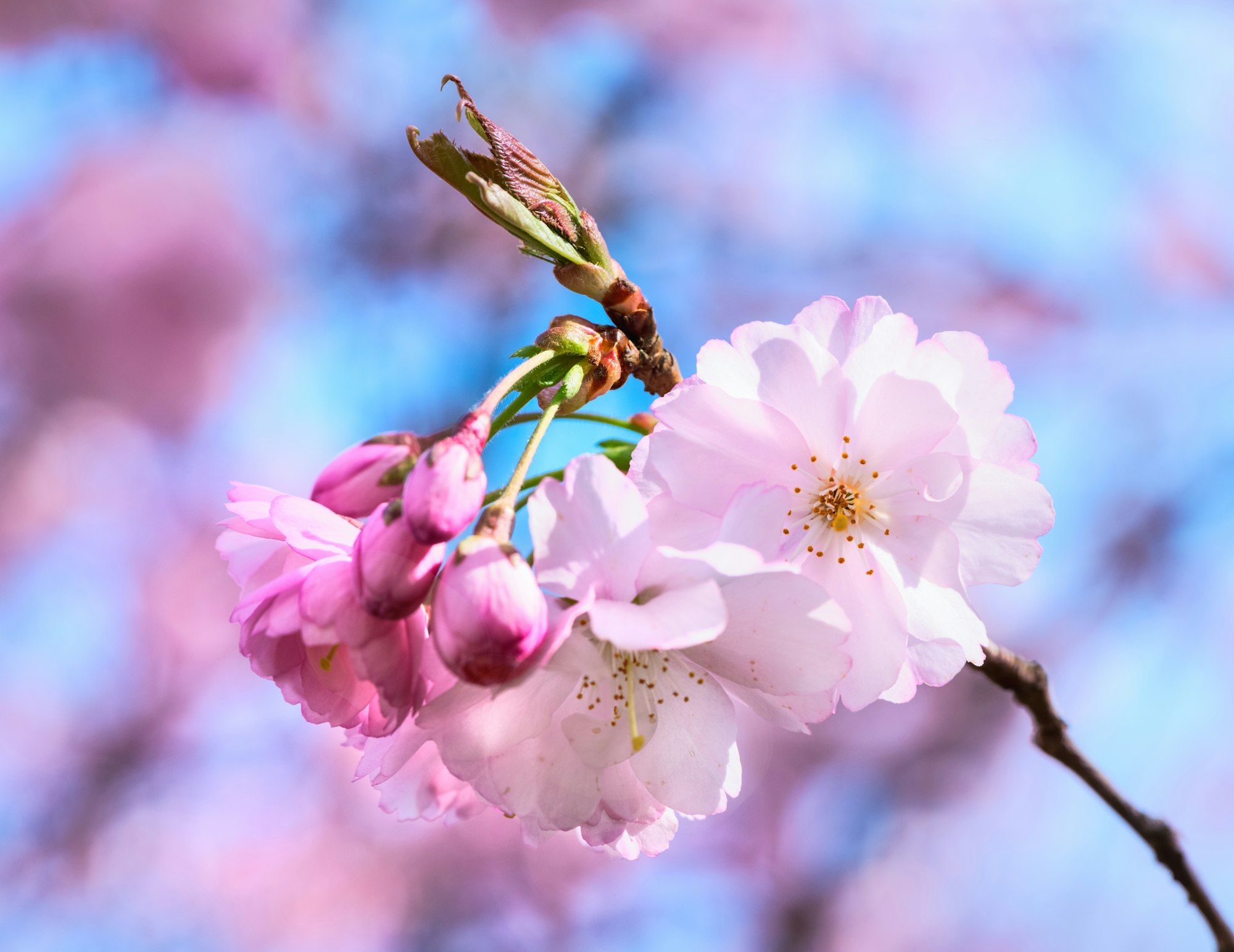
The Cherry Blossom is a sight to behold. These trees are famous for their breathtaking pink flowers. They symbolize the beauty of nature and the fleeting moments of life. Let’s explore the details about Cherry Blossoms.
Varieties
There are several varieties of Cherry Blossom trees. Some of the most popular ones include:
- Yoshino Cherry: Known for its white-pink flowers.
- Kwanzan Cherry: Boasts double pink blooms.
- Weeping Cherry: Features drooping branches and delicate flowers.
Blooming Season
The Cherry Blossom blooming season is a magical time. These trees usually bloom in early spring.
| Variety | Blooming Period |
|---|---|
| Yoshino Cherry | Late March to Early April |
| Kwanzan Cherry | Mid-April to Late April |
| Weeping Cherry | Early April to Mid-April |
Mark your calendar to witness these stunning pink flowers in full bloom.
Number #2 Magnolia
The magnolia tree is a stunning addition to any garden. Its pink blossoms bring a touch of elegance and charm. Known for their large, fragrant flowers, magnolias are a favorite among garden enthusiasts.
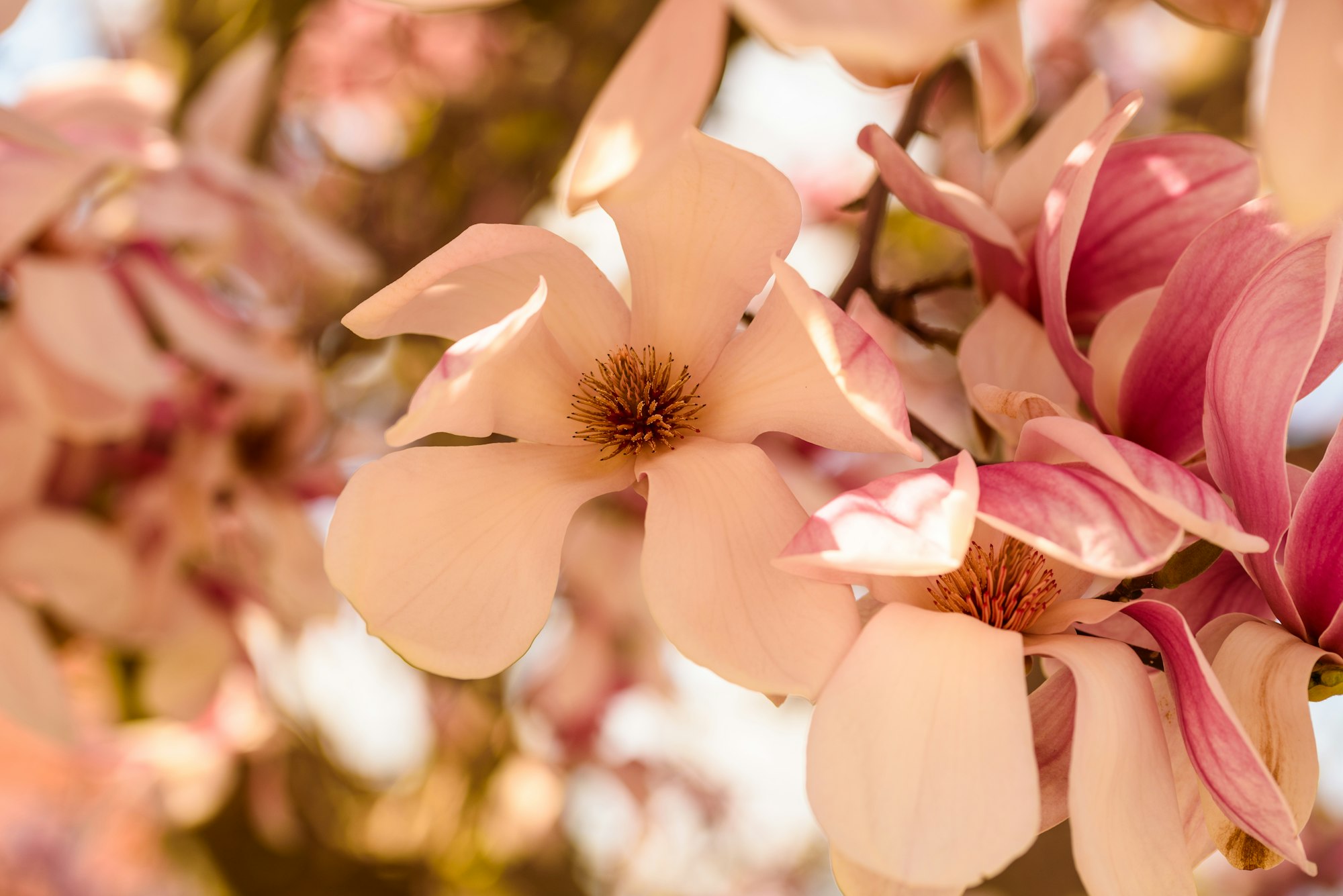
Popular Types
- Jane Magnolia: This type features vibrant pink-purple flowers.
- Ann Magnolia: Known for its deep pink blooms and compact size.
- Star Magnolia: This variety has star-shaped, light pink flowers.
- Southern Magnolia: Large, cup-shaped blooms with a slight pink hue.
Care Tips
Caring for a magnolia tree ensures its vibrant blooms. Follow these tips:
- Planting Location: Choose a spot with full or partial sunlight.
- Soil: Ensure well-draining, slightly acidic soil for best growth.
- Watering: Water regularly, especially during dry spells.
- Mulching: Apply mulch to retain moisture and control weeds.
- Pruning: Prune after flowering to maintain shape and health.
| Task | Description |
|---|---|
| Fertilizing | Use a balanced, slow-release fertilizer in early spring. |
| Protection | Shield young trees from strong winds. |
| Pest Control | Inspect for pests and treat with organic solutions if needed. |
Magnolia trees can transform your garden with their beauty. With the right care, these pink-flowered trees will thrive and enchant every season.
Number #3 Dogwood
The Dogwood tree is a favorite for many garden enthusiasts. It offers not only stunning pink flowers but also a variety of shapes and sizes. These trees are perfect for adding a splash of color to your garden.
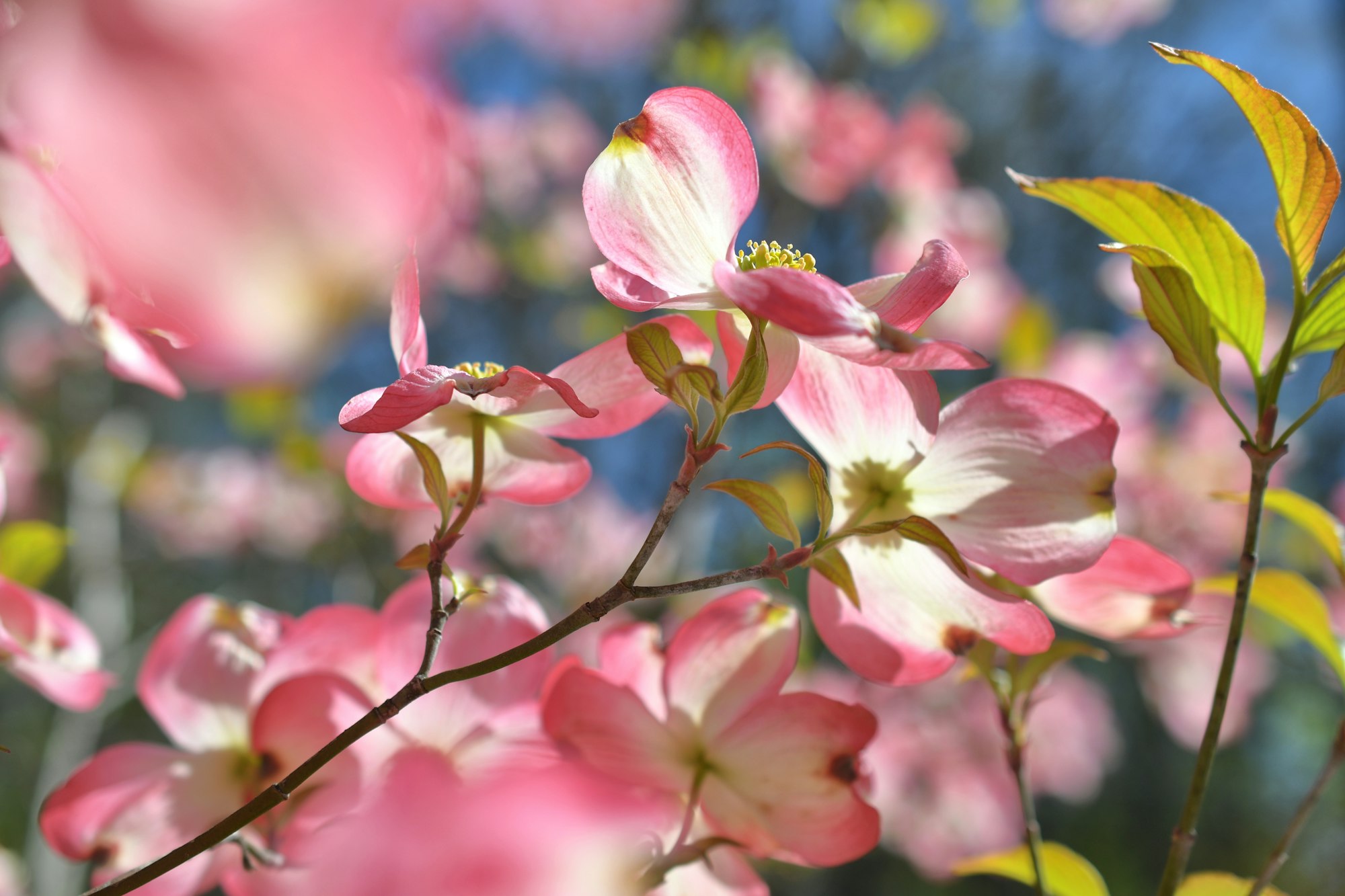
Color Variations
Dogwood trees are renowned for their color variations. They bloom in different shades of pink, from soft blush to deep magenta. Each variation adds a unique touch to any landscape.
- Light Pink: Soft and delicate, perfect for a subtle garden accent.
- Medium Pink: Vibrant and eye-catching, great for a focal point.
- Deep Pink: Bold and striking, ideal for making a statement.
Ideal Conditions
Dogwoods thrive in ideal conditions that include well-drained soil and partial shade. They prefer soil that is rich in organic matter. Too much direct sunlight can harm them.
| Condition | Requirement |
|---|---|
| Soil Type | Well-drained, rich in organic matter |
| Light | Partial shade |
| Watering | Regular, but not waterlogged |
| Temperature | Moderate, avoids extreme heat |
Regular watering is essential, but the soil should not be waterlogged. Dogwoods also benefit from a layer of mulch to retain moisture and regulate temperature.
These trees are best suited for moderate climates. Extreme heat can stress them, reducing their bloom quality.
Number #5 Redbud
The Redbud tree is a beautiful addition to any garden. Its pink blossoms create a stunning display in spring. Let’s explore its unique features and how to plant it.
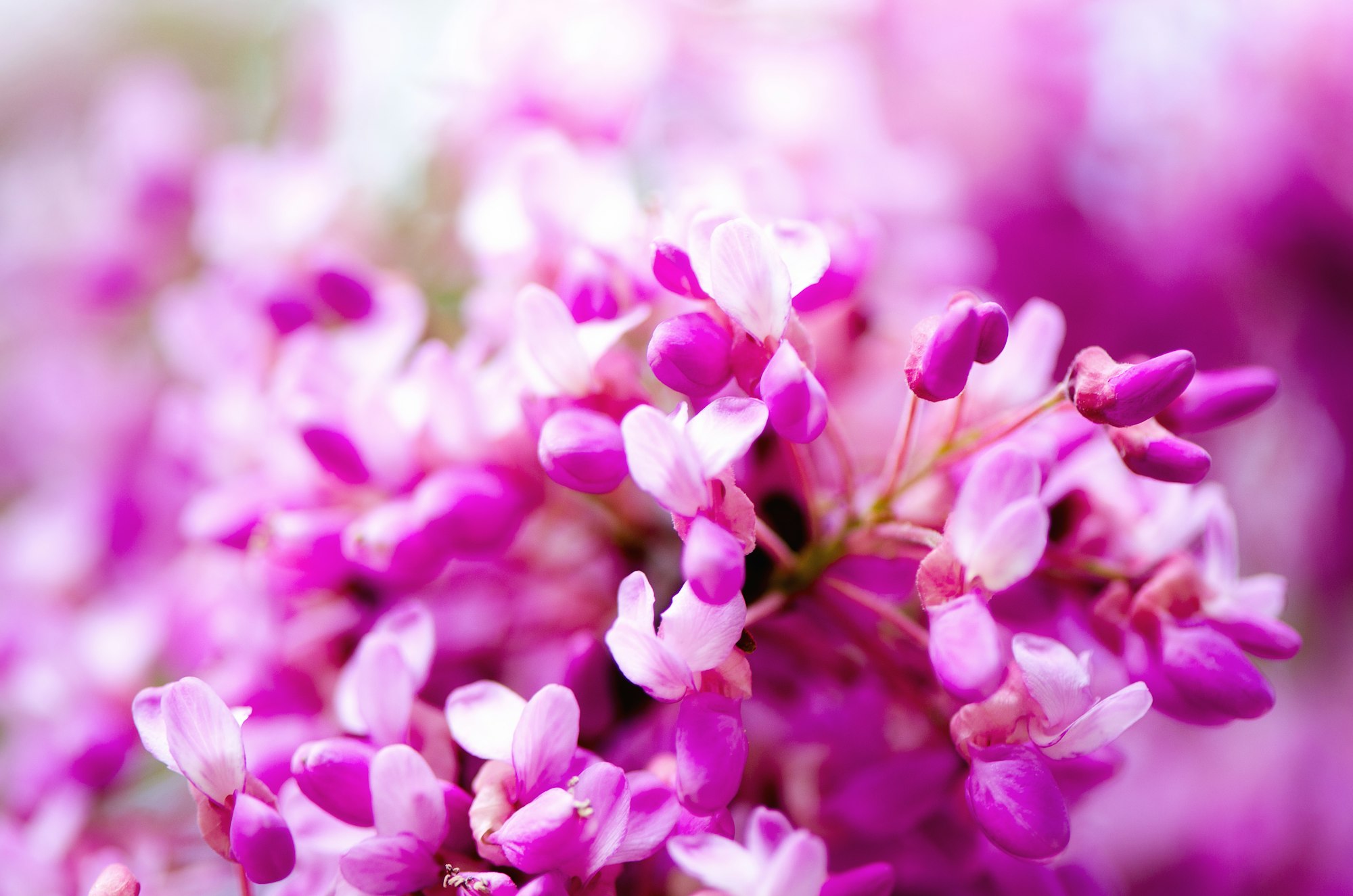
Unique Features
The Redbud tree stands out with its heart-shaped leaves. In spring, it bursts into a sea of pink flowers. These flowers bloom before the leaves appear, creating a striking contrast. The tree grows well in various climates and soils. Wildlife loves the Redbud for its nectar-rich flowers. Bees and butterflies frequently visit it.
Planting Guide
Follow these steps to plant your Redbud tree:
- Choose a spot with full sun or partial shade.
- Ensure the soil is well-drained and fertile.
- Dig a hole twice as wide as the root ball.
- Place the tree in the hole, ensuring the root ball’s top is level with the ground.
- Fill the hole with soil, and water thoroughly.
- Add mulch around the base to retain moisture.
Here are some quick tips for Redbud tree care:
- Water regularly during the first year.
- Prune dead branches in late winter.
- Fertilize in early spring.
With the right care, your Redbud tree will thrive and bloom beautifully.
Number #6 Crabapple
The Crabapple tree is a stunning addition to any garden. Its vibrant pink flowers and compact size make it a favorite. This tree is not only beautiful but also easy to care for.
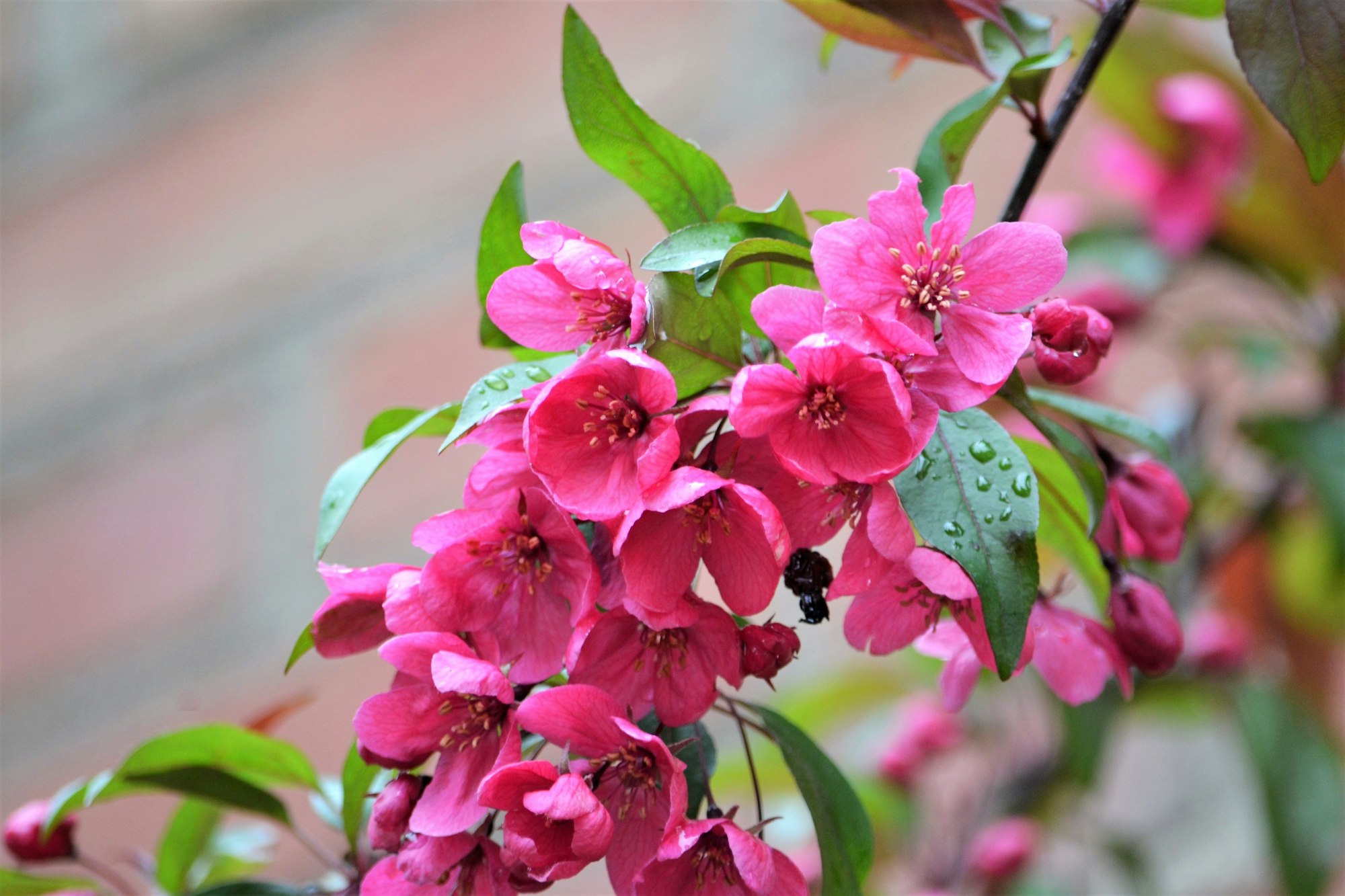
Flower Characteristics
The flowers of the Crabapple tree are truly a sight to behold. They bloom in clusters, creating a pink canopy. The blooms are small but numerous, giving a lush appearance. The petals are soft and delicate, often with a light fragrance.
The flowers typically appear in spring. They can last for several weeks, attracting bees and other pollinators. The vibrant pink color can vary in shades, from light pink to deep magenta.
| Feature | Description |
|---|---|
| Bloom Time | Spring |
| Flower Color | Pink (varies in shades) |
| Fragrance | Light and pleasant |
Maintenance
Maintaining a Crabapple tree is simple and straightforward. These trees require minimal care, making them ideal for busy gardeners.
- Watering: Regular watering is essential, especially in dry periods.
- Pruning: Prune in late winter to maintain shape and health.
- Fertilizing: Use a balanced fertilizer in early spring for best growth.
Watch for common pests like aphids and caterpillars. Treat early to prevent damage. Regularly check the tree for any signs of disease. Proper care ensures a healthy and vibrant Crabapple tree.
Number #7 Peach Tree
The Peach Tree is a symbol of spring and renewal. Its pink blossoms bring joy and beauty to any garden. This tree offers not only stunning flowers but also delicious fruits.
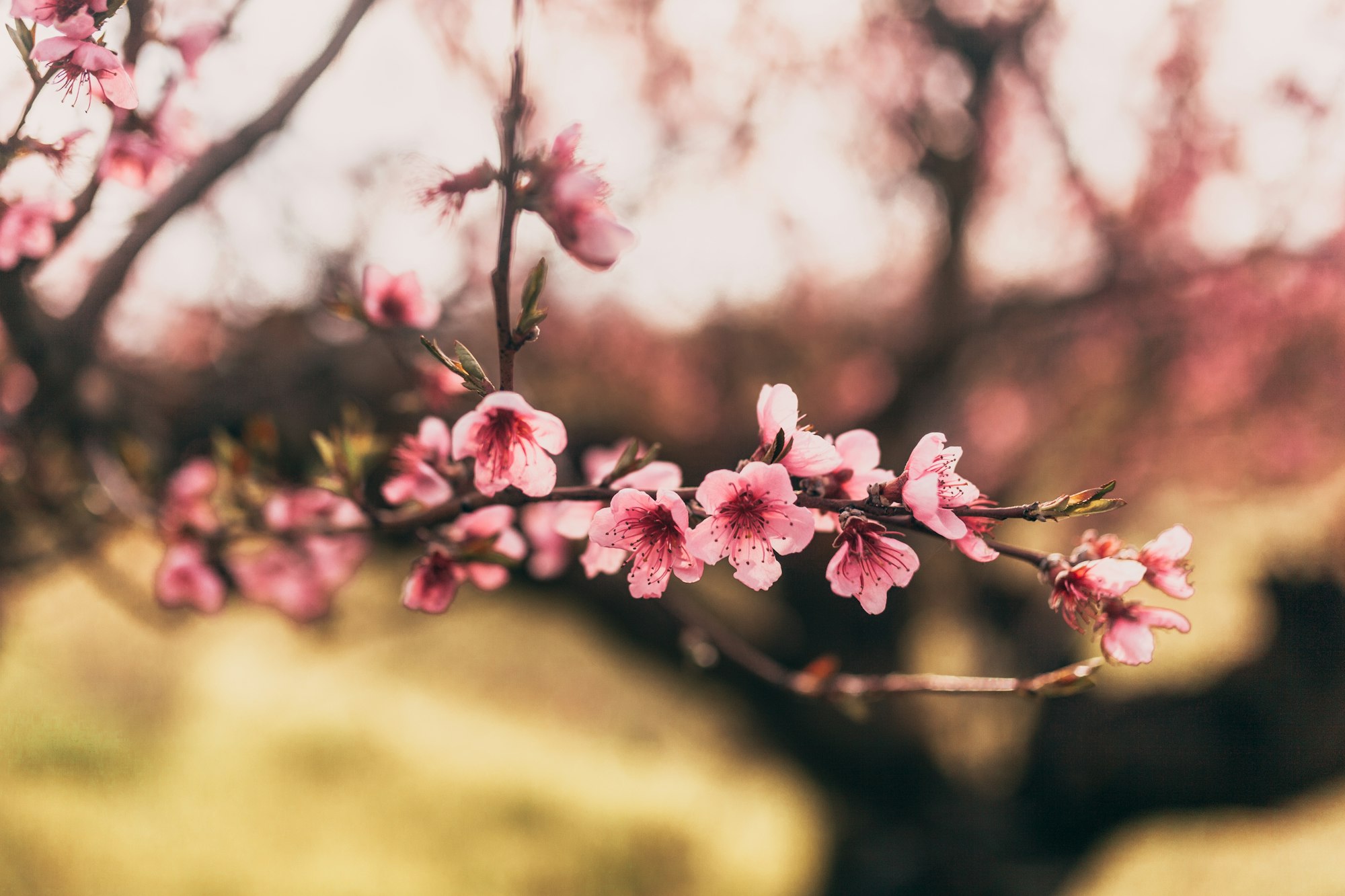
Varietal Differences
Peach trees come in several varieties, each with unique features. Here are some popular ones:
| Variety | Flower Color | Fruit Type |
|---|---|---|
| Elberta | Deep Pink | Freestone |
| Redhaven | Light Pink | Clingstone |
| Hale-Haven | Bright Pink | Freestone |
Growing Requirements
Planting a peach tree requires specific conditions for optimal growth. Follow these guidelines:
- Sunlight: Peach trees need full sun.
- Soil: Well-drained, sandy soil is best.
- Water: Regular watering, but avoid waterlogging.
- Spacing: Space trees 15-20 feet apart.
- Pruning: Prune annually for better fruit yield.
By meeting these growing requirements, your peach tree will flourish and produce beautiful blossoms and tasty fruits.
Number #8 Oleander
The Oleander is a beautiful tree with pink flowers. It creates a stunning display in gardens and landscapes. Known for its vibrant pink blooms, the Oleander adds a pop of color to any setting.
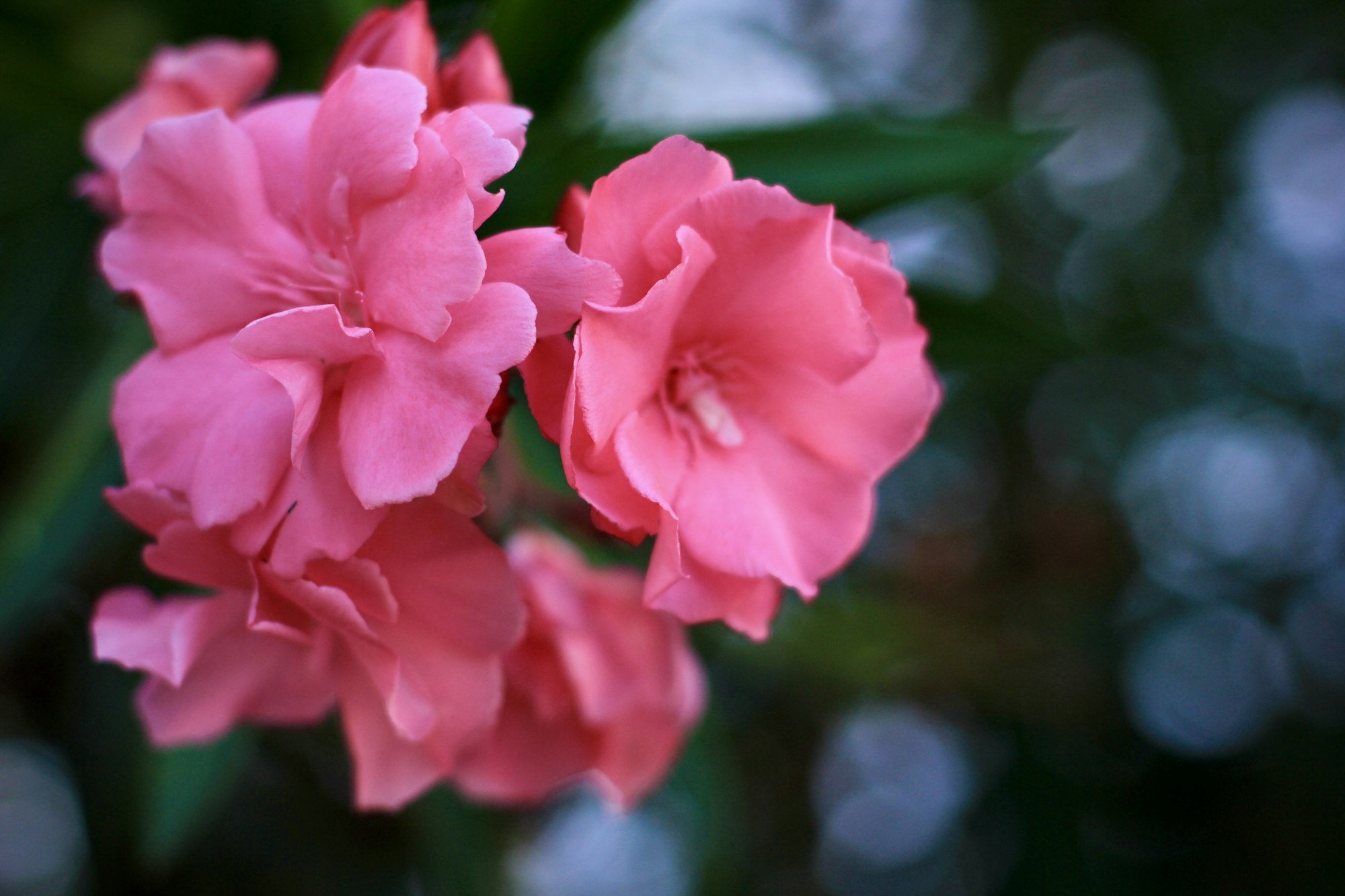
Toxicity Warning
While the Oleander is lovely, it is also highly toxic. All parts of the plant contain dangerous chemicals. Keep children and pets away from this tree. Even touching the plant can cause irritation.
Climate Suitability
The Oleander thrives in warm climates. It prefers regions with mild winters and hot summers. Ideal for USDA zones 8-10, the tree needs full sun to bloom best.
| Climate Factor | Preference |
|---|---|
| Temperature | Warm |
| Sunlight | Full Sun |
| Soil | Well-drained |
The Oleander is drought-tolerant once established. Regular watering helps young trees grow strong. Pruning keeps the tree healthy and encourages more blooms.
- Plant in well-drained soil.
- Water regularly during the first growing season.
- Prune in early spring for best results.
Number #9 Hibiscus
The Hibiscus is a tropical gem known for its vibrant pink flowers. These stunning trees add a splash of color to any garden. Hibiscus trees thrive in warm climates, offering year-round beauty.
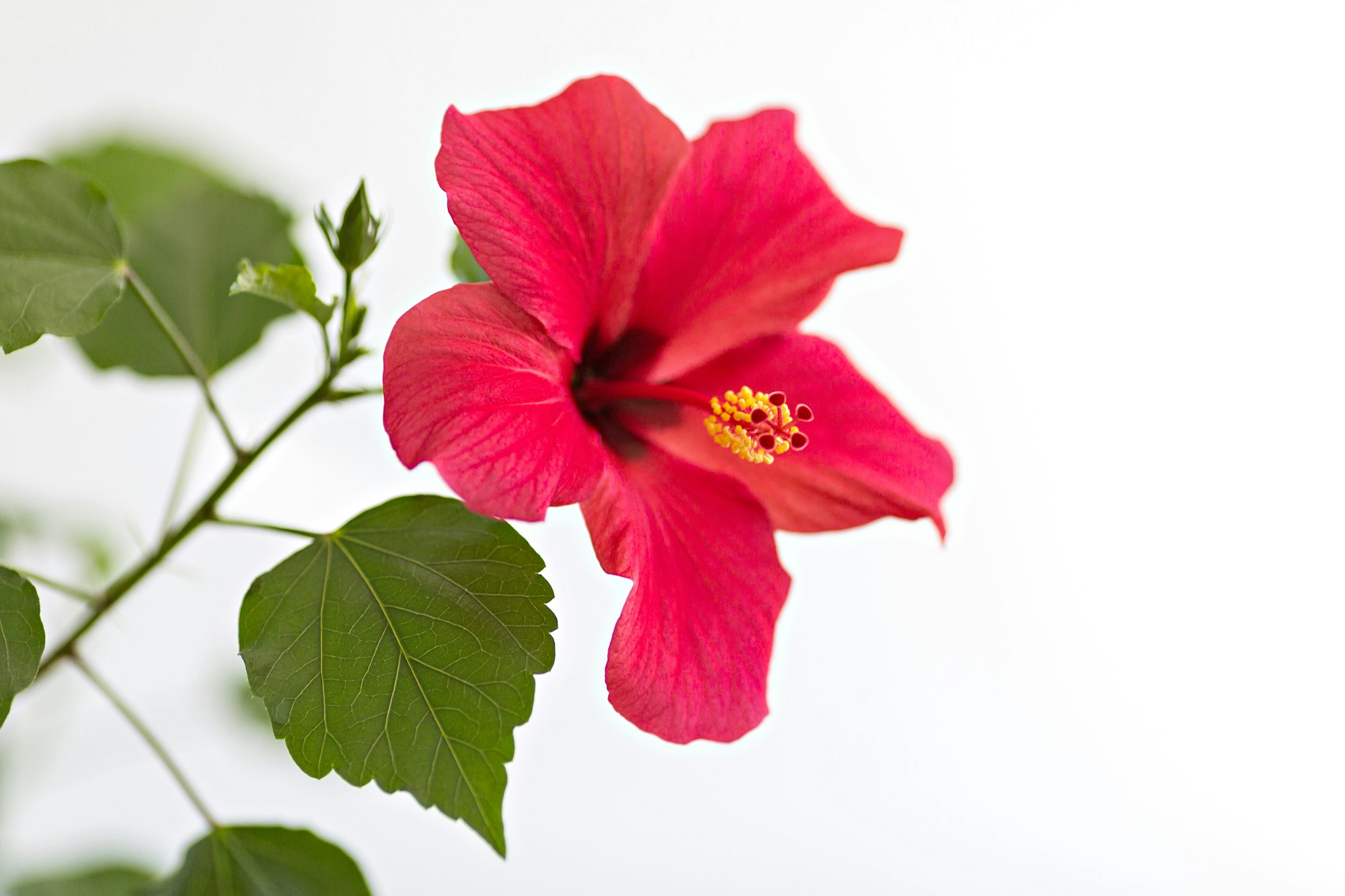
Tropical Appeal
Hibiscus trees bring a tropical appeal to gardens and landscapes. Their large, pink flowers bloom profusely, attracting hummingbirds and butterflies.
- Evergreen foliage provides lush greenery throughout the year.
- Flowers are trumpet-shaped and can grow up to 8 inches wide.
- Perfect for creating a tropical oasis in your backyard.
Planting Hibiscus near patios or pools enhances the tropical ambiance. They can also be grown in containers for versatility. Hibiscus trees are ideal for both novice and experienced gardeners.
Pruning Techniques
Proper pruning keeps Hibiscus trees healthy and promotes more blooms. Follow these simple steps:
- Use clean, sharp pruning shears.
- Remove dead or diseased branches first.
- Trim back to just above a leaf node.
- Prune in early spring for best results.
Regular pruning helps maintain the tree’s shape and size. It also encourages new growth and more vibrant flowers. Always wear gloves to protect your hands while pruning.
| Pruning Task | Recommended Time |
|---|---|
| Remove Dead Branches | Early Spring |
| Shape the Tree | Early Spring |
| Encourage New Growth | Throughout Growing Season |
By following these pruning techniques, your Hibiscus tree will thrive. Enjoy its stunning pink flowers and tropical charm.
Number #10 Crape Myrtle
The Crape Myrtle is a beloved tree known for its stunning pink blooms. It adds a touch of elegance to gardens and landscapes. This tree is not only beautiful but also resilient and easy to care for.
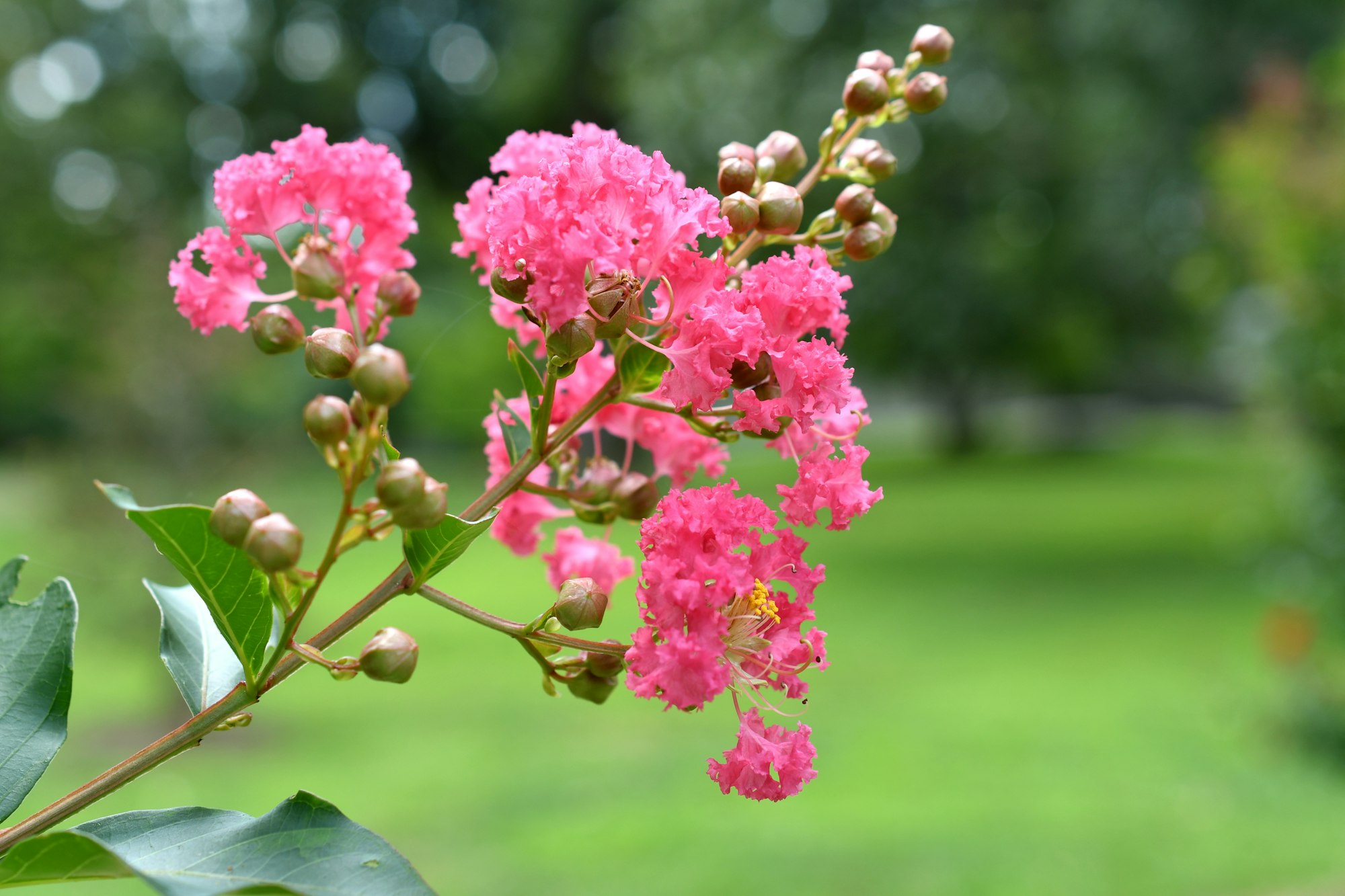
Long Blooming
The Crape Myrtle is famous for its long blooming period. It starts flowering in early summer and continues until fall. This extended bloom time ensures your garden stays vibrant for months.
The tree’s flowers come in various shades of pink. From soft pastels to bright, vivid hues, there’s a Crape Myrtle for every taste.
Here are some key points about its blooming:
- Blooms from early summer to fall
- Variety of pink shades
- Consistent and abundant flowers
Soil Preferences
The Crape Myrtle thrives in well-drained soil. It can adapt to different soil types but prefers slightly acidic conditions. Here’s a quick guide to its soil preferences:
| Soil Type | Preference |
|---|---|
| Well-drained | High |
| Slightly acidic | Medium |
| Clay | Low |
Ensure the soil is not too compact. This allows the roots to breathe and grow. Adding compost can improve soil quality and drainage.
For best results, water the tree deeply but infrequently. This encourages deep root growth and makes the tree more drought-resistant.
Number #11 Flowering Plum
The Flowering Plum is a spectacular tree that dazzles with pink blooms. These trees add a splash of color to gardens and landscapes. Their beauty and fragrance make them a favorite among gardeners.
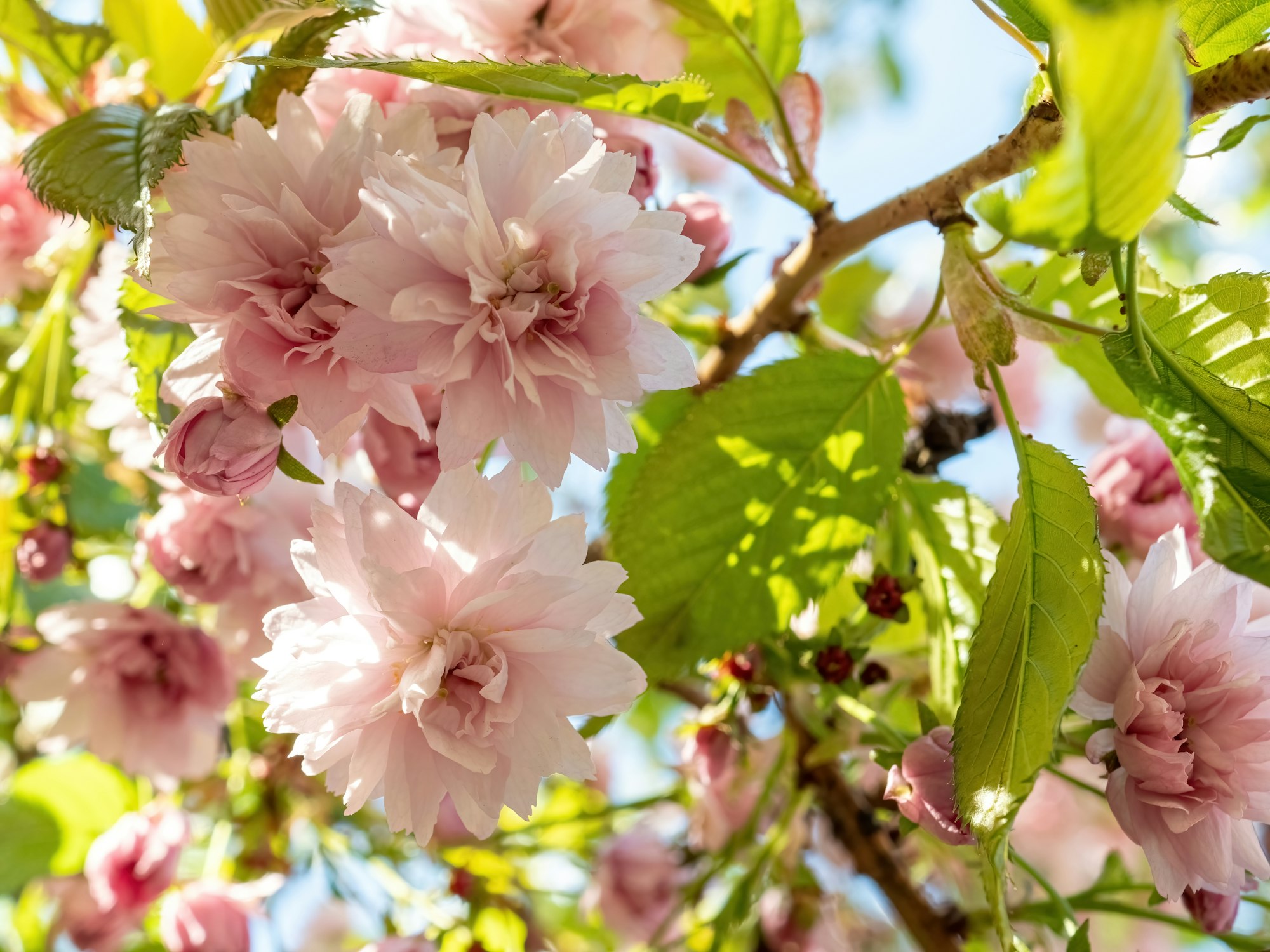
Fragrant Blooms
The Flowering Plum tree is known for its fragrant blooms. These blooms appear in early spring, creating a breathtaking display. The pink flowers have a sweet scent that fills the air. This fragrance attracts bees and butterflies, enhancing garden biodiversity.
The blooms of the Flowering Plum last for several weeks. They create a stunning visual impact with their vibrant color. These flowers are perfect for attracting pollinators to your garden.
Sunlight Needs
The Flowering Plum tree thrives in full sunlight. It needs at least 6 hours of direct sunlight daily. This ensures the tree produces abundant blooms. Partial shade is acceptable but may reduce flower production.
Plant the tree in a sunny spot for the best results. Ensure the tree receives enough light to flourish. Proper sunlight helps maintain the health and beauty of the tree.
| Feature | Details |
|---|---|
| Bloom Time | Early Spring |
| Fragrance | Sweet and Pleasant |
| Sunlight Needs | Full Sun (6+ hours) |
| Attracts | Bees and Butterflies |
- Fragrant Blooms: Sweet-scented, attracts pollinators.
- Sunlight Needs: Prefers full sun for optimal growth.
- Bloom Time: Early spring, lasting several weeks.
Number #12 Silk Tree
The Silk Tree, also known as the Mimosa Tree, is a stunning addition to any garden. Its delicate, fern-like leaves and fluffy, pink flowers create a tropical ambiance. This tree is not only beautiful but also attracts butterflies and bees, making it a perfect choice for nature lovers.
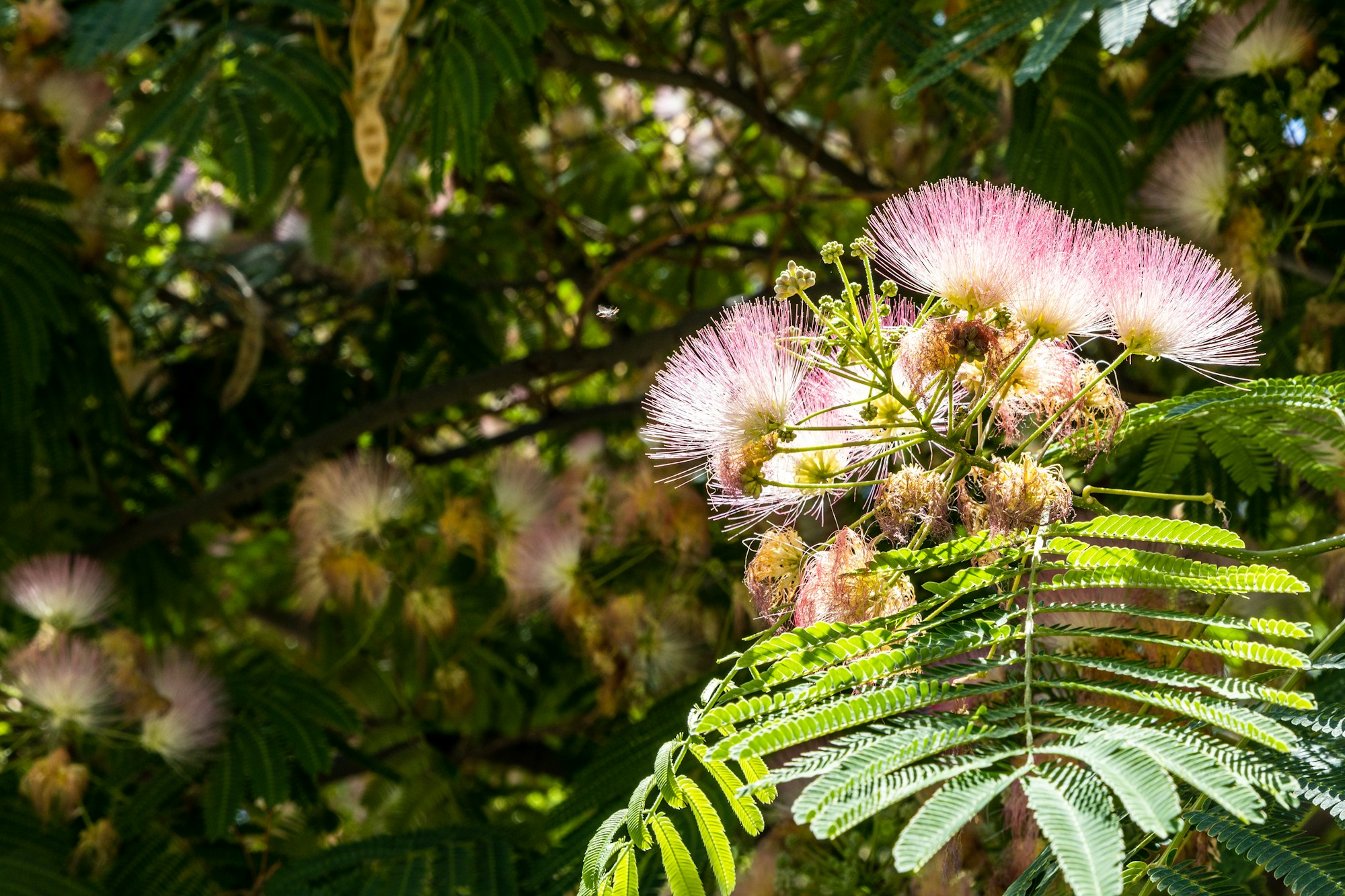
Exotic Look
The Silk Tree boasts an exotic look that stands out in any landscape. Its pink, powder-puff flowers bloom from late spring to early summer. These flowers have a sweet fragrance that fills the air. The leaves close at night, adding a unique touch to your garden.
In addition to its beauty, the tree’s umbrella-shaped canopy provides ample shade. This makes it an excellent choice for outdoor seating areas. Its aesthetic appeal lies in the contrast between its delicate flowers and lush, green leaves.
Watering Schedule
Maintaining a proper watering schedule is crucial for the health of your Silk Tree. During the first year, water the tree deeply once a week. This helps establish a strong root system. In dry climates, you may need to water more frequently.
Once established, the Silk Tree is relatively drought-tolerant. Reduce watering to once every two weeks during the growing season. Ensure the soil is well-drained to prevent root rot. Mulch around the base to retain moisture and keep the roots cool.
| Season | Watering Frequency |
|---|---|
| First Year | Once a week |
| Dry Climates | More frequently |
| Established Tree | Every two weeks |
Rose Of Sharon
The Rose of Sharon is a captivating pink-flowered tree. It captivates with its delicate, trumpet-shaped blossoms. This tree adds a touch of elegance to any garden. Its long blooming season ensures extended beauty.
Hardiness
The Rose of Sharon thrives in USDA zones 5-9. It can withstand both heat and cold. This makes it a versatile choice for many regions. Plant it in well-drained soil for best results.
| Zone | Temperature Range (°F) |
|---|---|
| 5 | -20 to -10 |
| 6 | -10 to 0 |
| 7 | 0 to 10 |
| 8 | 10 to 20 |
| 9 | 20 to 30 |
Pest Control
Keep an eye out for aphids and Japanese beetles. These pests can damage the tree. Regular inspections help in early detection. Use insecticidal soap to manage aphids. For beetles, hand-pick them off the tree.
- Inspect the tree weekly.
- Apply insecticidal soap for aphids.
- Hand-pick Japanese beetles.
With proper care, the Rose of Sharon will bloom beautifully. It rewards you with vibrant pink flowers every year. Embrace its beauty and make it a garden centerpiece.
Frequently Asked Questions
What Are Some Pink-flowered Trees?
Some pink-flowered trees include the Cherry Blossom, Eastern Redbud, and Dogwood. These trees add vibrant color to landscapes.
When Do Pink-flowered Trees Bloom?
Most pink-flowered trees bloom in spring. However, some varieties may also bloom in summer or fall.
Are Pink-flowered Trees Easy To Grow?
Yes, many pink-flowered trees are easy to grow. They require basic care like watering and occasional pruning.
Do Pink-flowered Trees Attract Wildlife?
Yes, pink-flowered trees attract pollinators like bees and butterflies. They also provide shelter for birds.
Conclusion
Embrace the beauty of pink-flowered trees in your garden. These stunning trees add vibrant colors and elegance. From cherry blossoms to magnolias, each tree offers unique charm. Enhance your landscape with these breathtaking pink blooms. Your garden will become a serene and picturesque haven.
Enjoy the splendor of nature’s pink power.
Pine Tree Rescue: Saving Pine Trees with Brown Needles
 Dr Ahsanur Rahman, PHD
Dr Ahsanur Rahman, PHD
How to Grow Garlic Clove: A Step-by-Step Guide
 Dr Ahsanur Rahman, PHD
Dr Ahsanur Rahman, PHD


